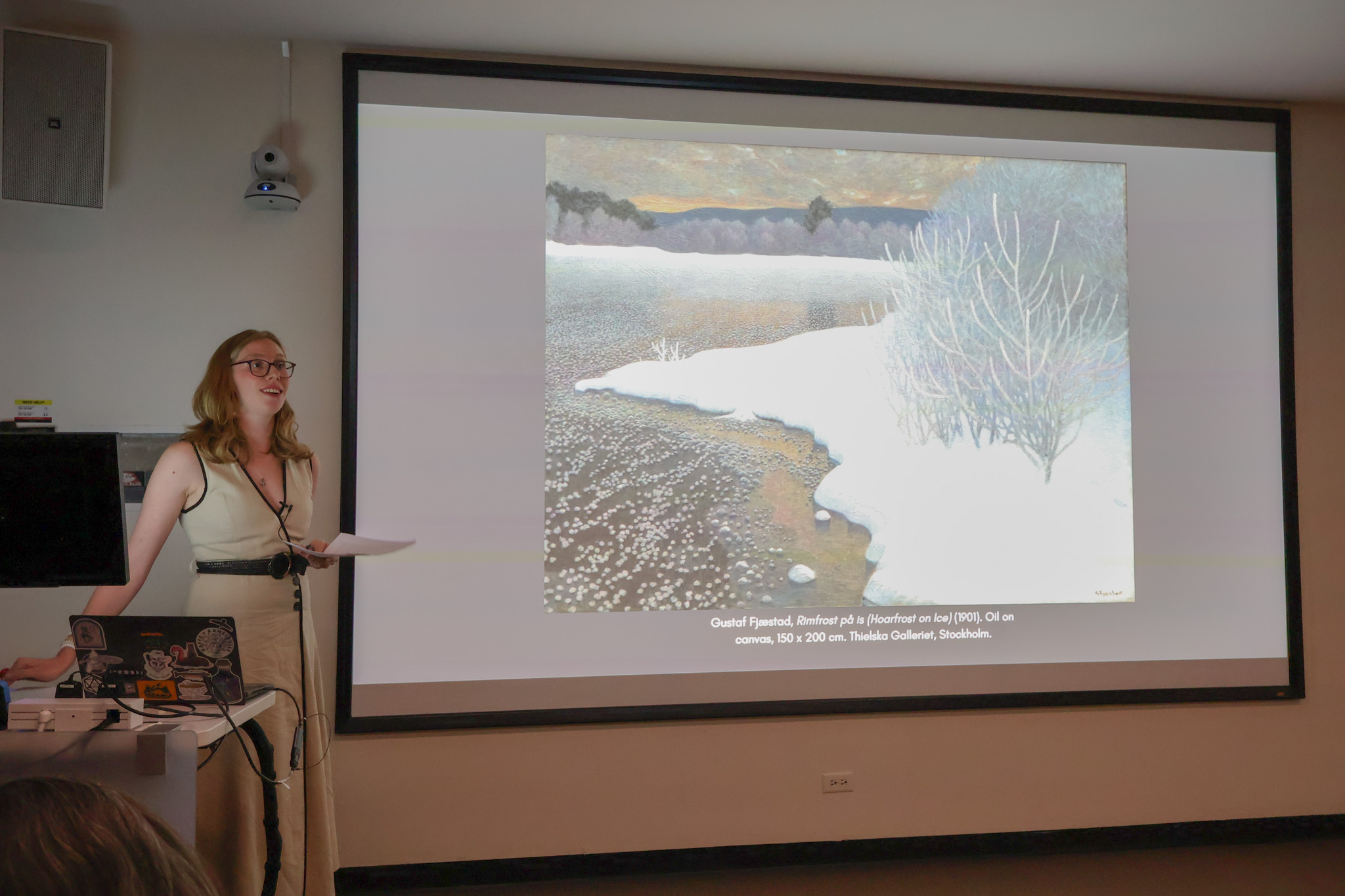Dr. Isabelle Gapp encourages interdisciplinary analysis of Swedish painter Anna Boberg
September 19, 2025
 Abigail Hebert
Abigail HebertOn Wednesday, Dr. Isabelle Gapp traveled to the College to share her scholarship on Swedish artist Anna Boberg through her talk titled “A Timeless Arctic: Anna Boberg, the Lofoten Islands and a Circumpolar Landscape.” An assistant professor in the department of art history and co-director of the Centre for the North at the University of Aberdeen, Gapp’s scholarship focuses on landscape and environmental art history from around the Circumpolar North and from 1800 to the present.
Currently, Anna Boberg’s work “The Blue Roof” is on view at the Bowdoin College Museum of Art (BCMA) in the exhibition “Currents: Art Since 1875.” BCMA Co-Director Anne Goodyear enthusiastically invited Gapp to campus to highlight the piece.
“Implicit in [“The Blue Roof”] are so many interesting questions about the development of painting during that era, about what it means for a woman artist to be forging a new path for herself and [a really interesting] intersection between modern painting as an intellectual pursuit and lots of other types of exploration and discovery that are happening at the same time,” Goodyear said.
Gapp found her passion for Boberg’s work after researching the Exhibition of Contemporary Scandinavian Art, which opened in New York in 1912.
“The thing that really struck me was that there was only one woman on show in this entire exhibition, Anna Boberg. So, I ended up on this very long, winding journey of exploring her work and wanting to learn more about her and realizing that there is nothing really to learn about her because nothing had been written about her, and I saw it as my job as an art historian to rectify this…, to think about her in the context of our history,” Gapp said.
Gapp, particularly, sought to exhibit Boberg’s work rooted in her interactions with the Arctic landscape.
“What I’m hoping to do is offer a glimpse into the life and work of an artist whose creative practice was rooted in a specific local Arctic life and industry and yet whose landscapes offer a timelessness that remains palpable even to this day,” Gapp said.
“The Blue Roof” is undated, as many other Boberg pieces are. Gapp was particularly drawn to this feature of Boberg’s art, connecting it to the idea that Boberg’s work in the Norwegian Arctic from 1901 to 1933 created works that bridged technological and cultural transformations.
“I love that she doesn’t date everything. I like that it exists in this nebulousness…. She’s clearly experimenting at different times during this period, but we don’t understand this progression, which, for our historians, might be frustrating, but I quite like it. I like that there’s this unknown to her. She’s also painting a time where art is changing,” Gapp said.
The development of fishing in the Lofoten Islands off Norway’s northwest coast played a key role in Boberg’s works.
“[Boberg] is painting at a time when the fishing industry is rapidly changing. So it’s going from traditional, like hook and line fishing, to trolling and to taking steam trawlers out and just dredging the water,” Gapp said. “She writes and speaks a lot about this tension. She really depicts it, this industrialization of fishing. “
Gapp hopes her brief visit to the College will bring together students and community members alike to “The Blue Roof,” which is still available to visitors, and garner enthusiasm from all corners of campus.
“I was trying … to show the many different ways you can come at her work [that’s not] presenting one narrative that you have to buy hook, line and sinker. Here are a multiple number of narratives that might resonate more than one other.… You can come at it as somebody interested in fishing, in science, in coastlines or as an Arctic geographer. You can come at it as someone who’s interested in the built environment, in architecture. Her work provides these multiple avenues,” Gapp said.

Comments
Before submitting a comment, please review our comment policy. Some key points from the policy: